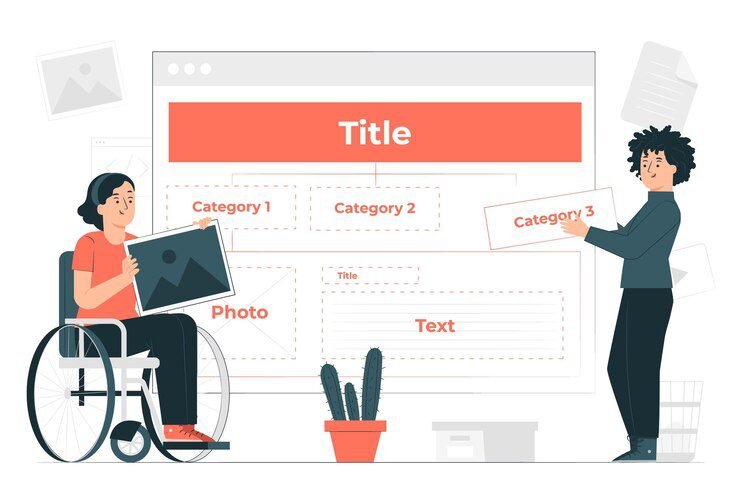Introduction
Accessibility isn’t just a legal requirement; it’s a chance to show your commitment to inclusivity. In 2025, making your roofing website ADA-compliant will not only help you avoid costly lawsuits but also expand your reach to a broader audience, including individuals with disabilities. This guide will explore the key components of ADA compliance, helping your roofing business build a website that’s functional, user-friendly, and accessible to all.
1. What is ADA Compliance, and Why Does it Matter?
The Americans with Disabilities Act (ADA) requires businesses to provide equal access to individuals with disabilities. For websites, this means ensuring users with visual, auditory, or motor impairments can navigate and interact with your site effectively.
- Why It’s Important:
- Avoid legal penalties.
- Improve user experience for everyone.
- Broaden your customer base by being inclusive.
2. Use Alt Text for All Images
Alt text provides a description of an image, allowing screen readers to convey the image’s purpose to visually impaired users.
- Best Practices:
- Be descriptive: “Roofing contractor installing shingles” is better than “image1.jpg.”
- Avoid keyword stuffing; focus on clarity and context.
3. Keyboard Navigation is a Must
Many users rely on keyboards instead of mice to navigate websites. Your roofing website should allow full functionality through keyboard input.
- Examples:
- Enable tab navigation for menus and forms.
- Add visible focus indicators to show which element a user is interacting with.
4. Ensure Text is Readable
Readable text benefits everyone, but it’s especially crucial for users with visual impairments.
- How to Improve Readability:
- Use a font size of at least 16px.
- Ensure color contrast between text and background meets WCAG (Web Content Accessibility Guidelines) standards.
5. Provide Closed Captions for Videos
If your website features videos, include closed captions so users with hearing impairments can access the content.
- Pro Tip:
- Use automated captioning tools like those provided by YouTube but always review for accuracy.
6. Optimize Forms for Accessibility
Forms are vital for lead generation, but they must be accessible to all users.
- Tips:
- Add clear labels to all form fields.
- Use error messages that explain how to fix issues (e.g., “Please enter a valid phone number”).
- Ensure forms can be completed using only a keyboard.
7. Include Accessible PDFs
If your roofing website offers downloadable resources like brochures or contracts, ensure PDFs are accessible.
- How to Make PDFs ADA-Compliant:
- Use a proper heading structure.
- Include alt text for images within the document.
- Enable text-to-speech compatibility.
8. Test Your Website’s Accessibility
Regular testing ensures your site stays compliant as you update content or add features.
- Tools to Use:
- WAVE (Web Accessibility Evaluation Tool).
- Lighthouse by Google for accessibility audits.
- Conduct User Testing: Involve individuals with disabilities to identify real-world challenges.
9. Provide an Accessibility Statement
An accessibility statement on your website shows visitors you’re committed to inclusivity and outlines the steps you’ve taken to ensure compliance.
- What to Include:
- Your commitment to accessibility.
- Contact details for reporting issues.
- A list of accessibility features your site offers.
10. Stay Updated with ADA Guidelines
ADA standards evolve, and staying informed is crucial. Subscribe to industry blogs, attend webinars, and keep your development team updated to maintain compliance.

Conclusion
ADA compliance is not just about avoiding lawsuits—it’s about creating a roofing website that welcomes everyone. By implementing these strategies, your site will stand out for its accessibility and inclusivity, ultimately boosting your reputation and customer base. Remember, an accessible website isn’t just good for users; it’s good for business.








